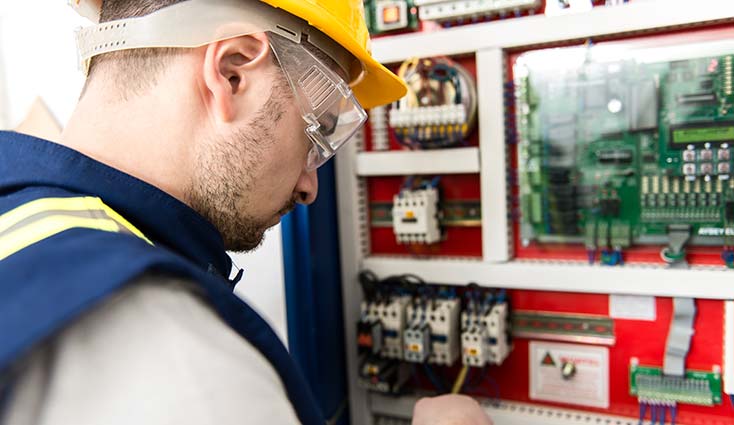What is a Main-Bonding-Jumper? Why Do We Need it?

By: Jerry Durham | Feb 05, 2019
For our typical AC electrical system, the purpose of the “Main Bonding Jumper” is to connect the equipment grounding conductors (E.G.C.) contained in each branch-circuit and the metal (conductive) service-disconnect enclosure to the Neutral Conductor of the electrical service. The reason for this is: a driven or buried earth ground (e.g. Ground Rod) will NOT trip a circuit-breaker during a fault (short-to-ground) condition. The earth simply offers too much resistance for current to flow fast enough back to the source (utility company transformer) to trip the circuit-breaker. Therefore, the bare/green equipment grounding conductors within the branch-circuits must be in contact with the Neutral Conductor of the electrical system; this provides a path of minimal resistance for fault current to flow back to the source of the electricity being generated- the utility company transformer.
This “main bonding jumper” that is required at the service disconnect (aka first means of disconnect, aka service equipment) that ties grounds to the neutral conductor is required in every enclosure that contains a means of disconnect (switch) for that electrical service.
While many electrical services have just one means of disconnect (such as a single main breaker) to kill all of the power to a building, the NEC allows up to six separate means of disconnects (six separate switches), each one in a separate enclosure if the installer likes, to serve as the disconnect. In that case, all of those enclosures are required to be grouped together at one location, and all six of those disconnect switches, (even when in separate enclosures), count as the one “Service Disconnect” means for that building or structure. And they all require their own “main bonding jumper” installed within their own individual enclosure.
Table 250.24(B) of the NEC requires that this “main bonding jumper” be un-spliced. A conductor that is spliced has more resistance than an un-spliced conductor, and since the main bonding jumper is part of the low-impedance (low resistance) path for ground-fault current to travel on, and is critical to safety, impedance must be kept as low as possible.
Main bonding jumpers are allowed to be wire, busbar, or a screw, as indicated in NEC 250.28.
Exception No. 1, to this overall requirement for a main bonding jumper to be present in every disconnect enclosure, tells us that when multiple means of disconnects (multiple switches) are located within a single piece of equipment, and that single piece of equipment is LISTED (third-party tested and approved) to serve as “Service Equipment” while containing multiple disconnects, then only one main bonding jumper is required to be installed within that listed piece of equipment, not one main bonding jumper for each disconnect switch, or disconnect switch enclosure, within that single piece of equipment.
Exception No. 1 exists because it is apparent that if all of the disconnect switches (up to six, but no more) are in one Listed metal cabinet, then just one main bonding jumper will provide the continuity necessary to bond the entire metal cabinet to the Neutral, and all of the equipment grounding conductors that are in contact with that metal cabinet.
The main bonding jumper is critical to safety; circuit-breakers do not trip properly without this critical connection between the grounds and the neutral at the first means of disconnect.

